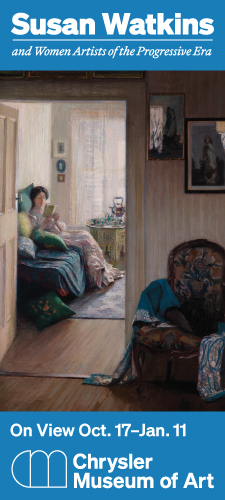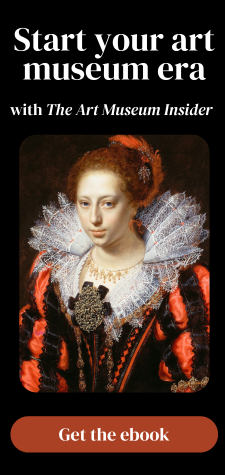Guest post by Anna Pratley, MA student, the Warburg Institute, London
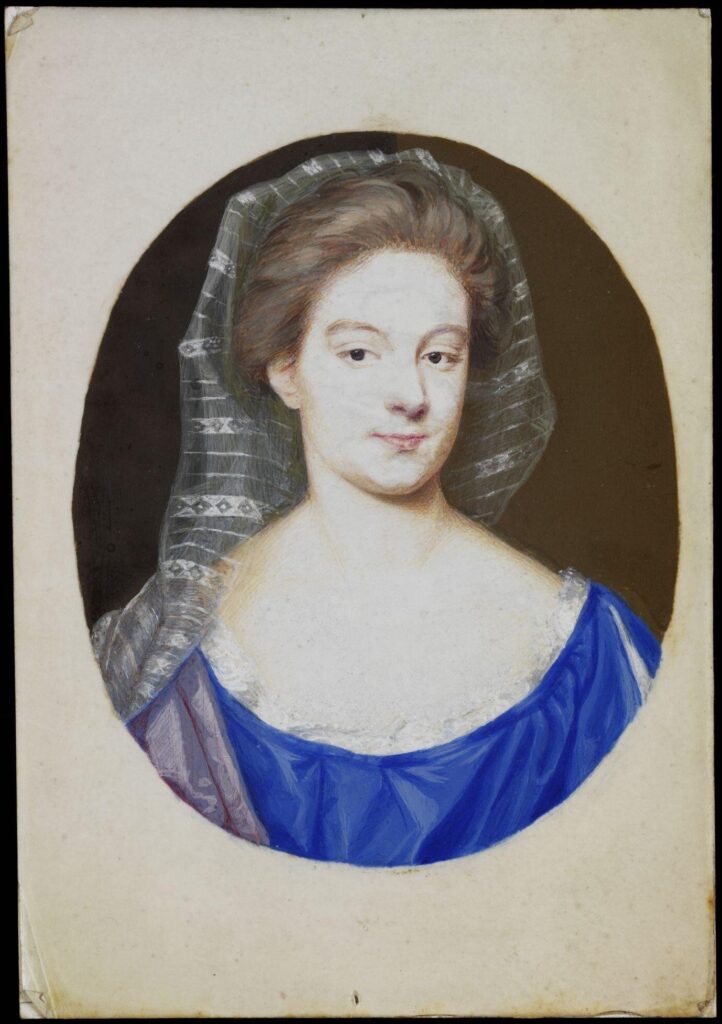
In a quiet, dark room near the crowded jewellery courts of the V&A Museum, miniature eyes peer out from behind glass houses. Hidden amongst these glittering portraits is the face of one of art history’s largely forgotten women artists: Susannah Penelope Rosse (1652–1700).
Family Life
Susannah Penelope was the eldest daughter of Anne and Richard Gibson (1615–1690). The Gibsons were employed as so-called “court dwarfs,” with Anne working for Queen Henrietta Maria and Richard for King Charles I. Both measured under four feet tall, but their children seem to have been of average height. Richard’s talent for miniature painting appears to have secured the family’s social standing throughout the political turmoil of the mid-seventeenth century.

Perhaps these court connections lead to Susannah marrying the wealthy goldsmith and jeweller Michael Rosse (1650–after 1735), son of Christopher Rosse, the court jeweller. The couple soon moved to Covent Garden, London, where they lived on Henrietta Street, a creative melting pot almost entirely occupied by middle-class artisans. Their first daughter, Elizabeth (“Betsy”), is the subject of a beautifully preserved sketch by Susannah’s father (fig. 1). Sadly their youngest, named after Susannah Penelope, died aged just four years.
Becoming an Artist
Rosse completed most of her works in Henrietta Street, likely operating out of the former studio of England’s most famous seventeenth-century miniaturist, Samuel Cooper (1608–1672). Rosse’s father-in-law (Christopher) came to own Cooper’s house and studio when the artist’s widow moved to St-Giles-in-the-Fields. Around the same time, Rosse’s brother-in-law Henry Priestman bought the house’s contents (he was later bequeathed the house itself in Christopher’s will). It is likely that Rosse was the only family member who would have benefitted from Cooper’s studio and tools, and thus she was gifted them by her husband’s family. It is perhaps no surprise, then, that Rosse quickly became known for her copies after Cooper: the historiographer George Vertue even claimed that “she studied & coppy’d him to perfection.” Recently, Tate Britain’s exhibition on British women artists, Now You See Us, displayed Rosse’s copy of Cooper’s Duchess of Richmond (fig. 2).
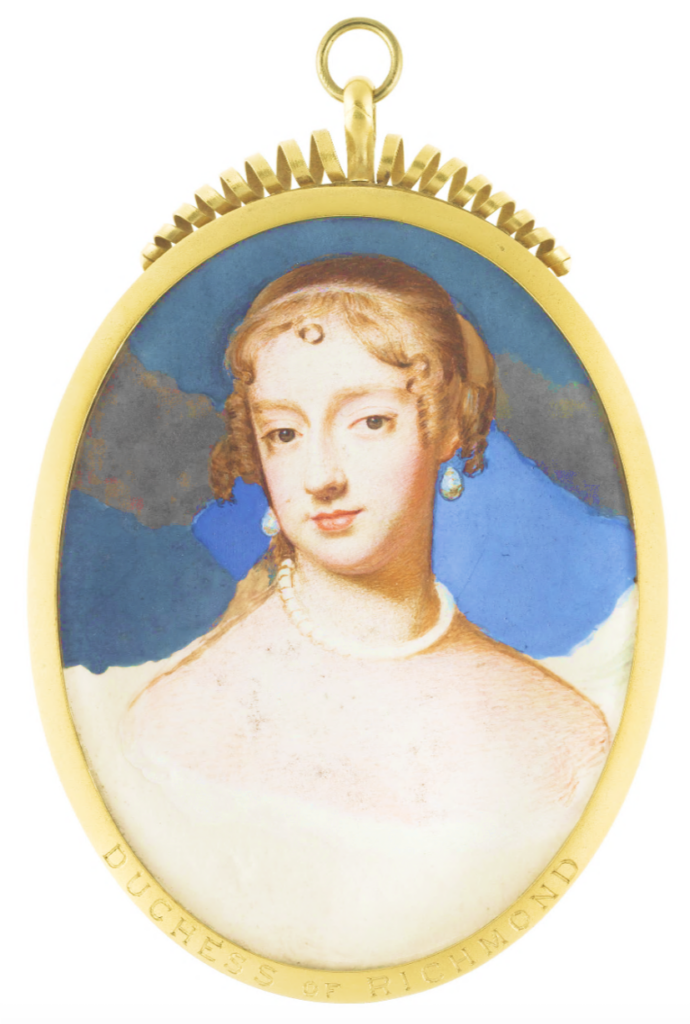
Rosse soon became a highly successful amateur artist, whose talent gave her access to sitters including the Bishop of Winchester, the Ambassador of Morocco and even royalty. Despite this, neither she nor her husband appear to have earned commission for her works. Many remained in her private collection for her whole life. In other words, it appears that Susannah Penelope Rosse was painting portrait miniatures for her own enjoyment.
What Are Portrait Miniatures?
Deriving from the word “minium,” Latin for the red lead used in manuscript illuminations, the term “miniature” soon began to signify any painted image in the manuscript tradition.
In the seventeenth century, however, miniature portraits were instead known as “limnings,” from the Latin verb “illuminare,” meaning “to decorate.”

Limning was a manual, technical and expensive practice. First, the artist had to prepare and strengthen a piece of vellum (calf skin) by sticking it to a playing card or building up layers of gesso. After smoothing the surface with an animal tooth burnisher, the limner drew an initial sketch before painting the area to be occupied by the figure in a flesh tone called the “carnation.” They then moved on to “dead-coloring,” where watercolor washes were put down to build up the image. The artist finalised the face, hair and dress with a fine squirrel hair brush. These stages can be identified in one of Rosse’s unfinished limnings (fig. 3).
Framing the limning transformed it into a tactile, wearable object. Settings contained gold, valuable jewels and sometimes the hair of the depicted individual, endowing the miniature with monetary and sentimental value (fig. 4).
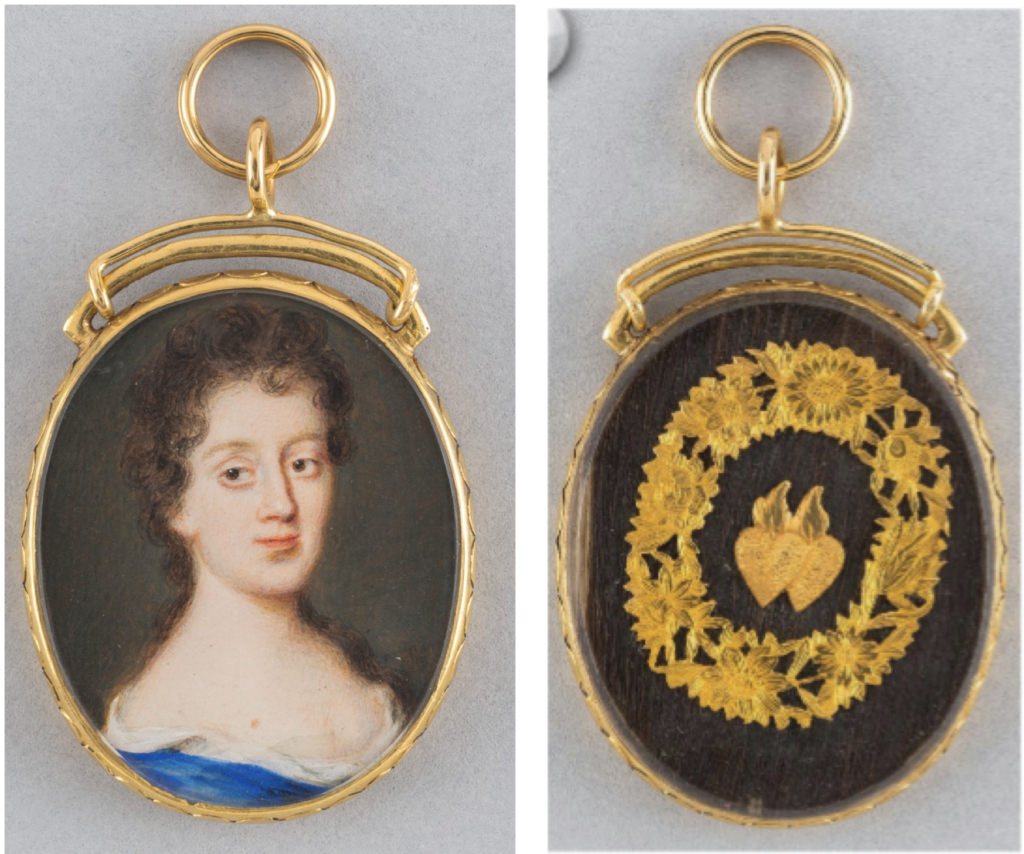
Susannah’s jeweller husband likely made the settings for her miniatures, obviating the need to outsource any step of the artistic process. The complete portrait miniature provided an intimate reminder of a loved one in their absence, eliciting feelings of affection and longing in the observer.
Women as Limners
The sixteenth-century English Court boasted several female miniaturists, namely Susannah Horenbout (1503–1554), Margaret Holsewyther (ca. 1504–after 1560) and Levina Teerlinc (ca. 1510s–1576). These women, like Rosse, were all daughters or wives of professional male artists. Without these connections, limning remained relatively inaccessible to women. Instructions for limning found in etiquette guides such as Henry Peacham’s The Compleat Gentleman (1661) are entirely absent from guides written for ladies. Wealthy men could pay for their wives and daughters to have lessons from the likes of artist and print seller Alexander Browne (1659–1706), but household duties remained the priority for middle class women. Samuel Pepys, for instance, complains that:
“…[I was troubled] to see my wife minding her paynting and not thinking of her house business, this being the first day of her beginning the second time to paynt.”
[3rd May 1666]
Of the few works by amateur women limners that we do have, most are copies after another artist. Well-respected in the seventeenth century, copies were practical for busy women, who could leave and return to the work at any time and did not have to endure the potential scrutiny of undertaking a private sitting with a male sitter.
Copies make up a significant proportion of Rosse’s oeuvre. One interesting example is her reproduction of a painting by her neighbor, the professional artist Mary Beale (1633–1699), which depicts the professional female poet and writer Elizabeth Singer Rowe (1674–1737) (fig. 5). The copy is the remarkable product of an entirely female line of production, at a time when women’s involvement in the creative arts was rare.
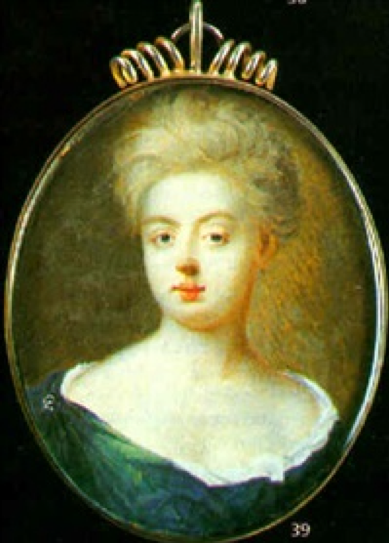
The Pocket Book Limnings
One item Rosse likely came to possess through her brother-in-law is a sketchbook labelled “Samuel Cooper’s Pocket Book.” Despite the name, we now know that only four of the miniatures it held are in fact works by Cooper. Nine of the limnings are by Susannah Penelope Rosse. These portraits offer an intimate insight into the connections of a late seventeenth-century woman.
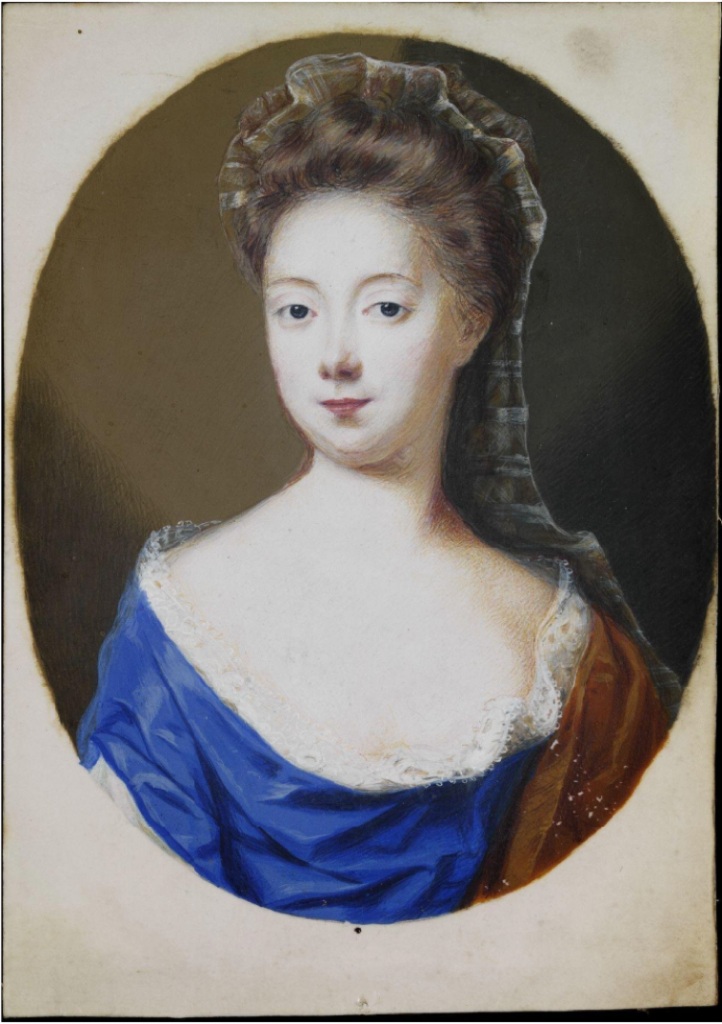
One example shows Rosse’s sister-in-law, Mary (fig. 6). Mary wears an unstructured “dress” (likely a studio drapery) over a visible chemise, considered a state of partial undress to the late seventeenth-century eye. “Galleries of Beauties,” which comprised representations of the most beautiful, popular and often promiscuous women of the English Court, immortalized this relaxed elite fashion. Rosse balances Mary’s suggestive dress with an unfussy hairstyle, modest headscarf, and blue drapery reminiscent of the Virgin Mary’s robes.
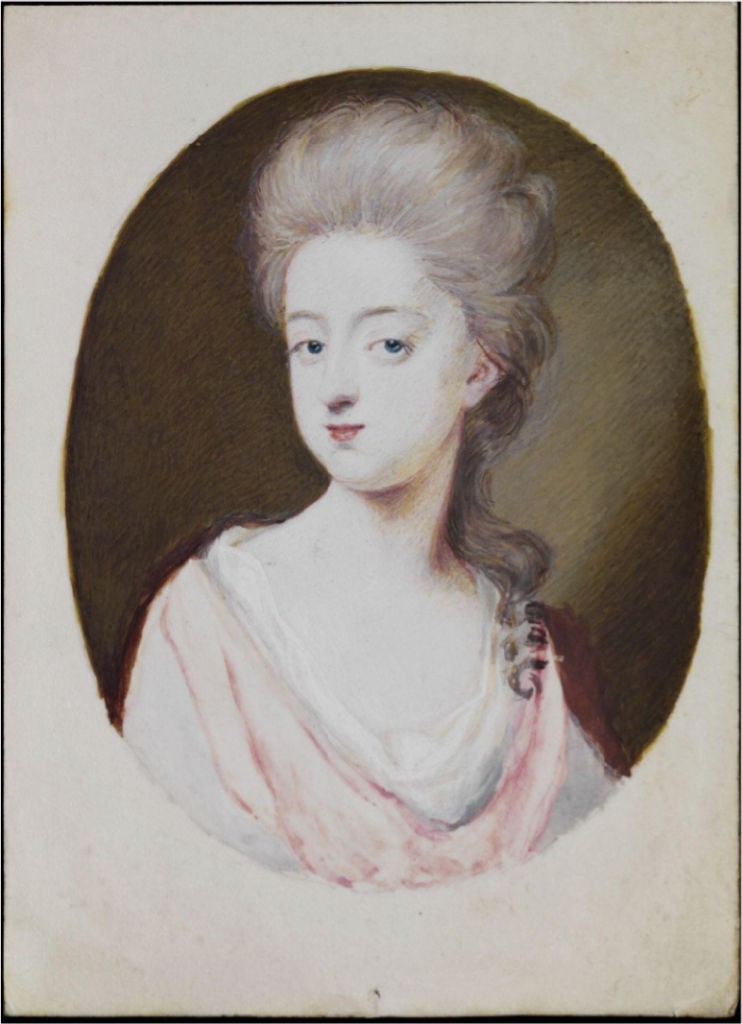
A portrait of Rosse’s neighbor provides a noticeable contrast (fig. 7). Mrs. Pru Phillips wears her hair in a fashionable, powdered style. Her eyebrows raised, she looks through long eyelashes, wearing a suggestive smile which invites the surveillant gaze. A single drape of pale pink fabric covers her chest. The overall effect is somewhat risqué and decisively feminine.
Creating the Self
We are lucky to be able to recognize the woman who produced these works through two surviving self-portraits. The earliest is intentionally incomplete, Rosse only having dead-colored the dress despite having cut out the image for framing (fig. 8).
This portrait is heavily historicized. Rosse’s hairstyle is outdated by about thirty-five years, while her scalloped sleeves borrow from the theatrical costumes of Van Dyck’s portraits. Through this stylisation, Rosse places herself within the canon of so-called “great” artists, while also representing herself as one of their elite sitters. However, the incompleteness of the dress implies a reservation about her belonging in either of these groups. Similarly, her gold earrings indicate her wealth while also undermining her social status by hinting at her husband’s trade. As we consider the depiction, we become increasingly aware that Rosse’s elite appearance is a costume.

An Artist of Contrasts
If this earlier portrait represents a desired identity, Rosse’s later self-portrait (fig. 9) seems an attempt to understand the self in that moment. Rosse still depicts herself in fashionable undress, but wearing a darker ochre that contemporary viewers would have associated with the Indian silk gowns favored by male portrait subjects. Her rich, dark hair is tied up like Mary’s, but several grey-streaked strands are falling loose, creating a sense of immediacy. Her pale complexion is contrasted by a sea-green background, an unusual choice almost never seen in limning. This color sits halfway between the expensive blue favored by male gentry and royalty, and the yellow-brown typically used for women.

This final self-portrait reflects Rosse’s position as a middle-class woman operating within upper-class society, as an amateur working to a professional level, and as a woman artist undertaking a practice traditionally associated with gentlemen. It is a portrait which, like its artist, is full of contrasts.
Anna Pratley has recently completed a Masters in Art History, Curatorship and Renaissance Culture at the Warburg Institute in London. Her research interests include amateur women miniaturists working in sixteenth- and seventeenth-century England, the domestic lives of the middle class in the long seventeenth century, and the application of feminist surveillance theory to women’s self-portraiture. Having previously worked in the museum sector, she is currently pursuing a career in art historical research and curatorship. She hopes to shine a light on little-known British artists, improving public awareness of their impact on the Northern Renaissance and beyond.
Other Art Herstory blog posts you might enjoy:
Finding Catherine Read, by Adam Busciakiewicz
The Lost Works of Susanna Horenbout, Female Artist at the Tudor Court, by Sylvia Barbara Soberton
Museum Exhibitions about Historic Women Artists: 2024
A Room of Their Own: Now You See Us Exhibition at Tate Britain, by Kathryn Waters
Levina Teerlinc, Illuminator at the Tudor Court, by Louisa Woodville
Susanna Horenbout, Courtier and Artist, by Kathleen E. Kennedy
Mary Beale (1633–1699) and the Hubris of Transcription, by Helen Draper
Paper Portraits: The Self-Fashioning of Esther Inglis, by Georgianna Ziegler
“Black-works, white-works, colours all”: Finding Susanna Perwich in her Seventeenth-Century Embroidered Cabinet, by Isabella Rosner
“Bright Souls”: A London Exhibition Celebrating Mary Beale, Joan Carlile, and Anne Killigrew, by Laura Gowing
Angelica Kauffmann: Grace and Strength, by Anita V. Sganzerla
Angelica Kauffman: Art, Music and Poetry, by Ellice Wu
Mary Linwood’s Balancing Act, by Heidi A. Strobel

